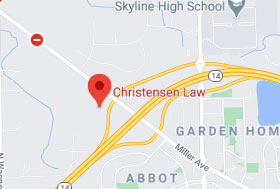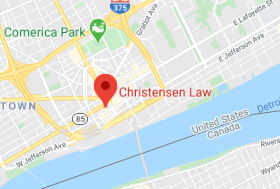
Filing a personal injury lawsuit against a person or organization isn’t an easy decision to make. You probably aren’t filing a lawsuit to get even with someone—you’re doing it because you’ve suffered real losses. Your losses could include financial hardships like the cost of medical treatment or the time you’ve missed at work.
But what about the mental anguish you’ve experienced because of your accident? What about the physical pain and suffering you went through due to your injuries? For good reason, you’re probably wondering how pain and suffering is calculated in lawsuits. You can turn to a Michigan personal injury law firm for help with this important task.
Professionals Typically Use Two Methods to Calculate Pain and Suffering
There are two common methods to calculate pain and suffering damages: the multiplier method and the per diem method. Some places may use a hybrid of the two, or another method altogether. An injury lawyer can review these possibilities with you and discuss calculation methods.
Multiplier Method
The first is to add up your monetary losses and multiply that figure by a number between one-and-a-half and five. The multiplier used will depend on several factors, including:
- The severity of your injuries, especially if they are catastrophic
- The length of your recovery
- Whether you can make a full recovery
- How your injuries affect your daily life
- How much physical pain you’ve endured
- How your injuries have affected your mental and emotional health
- Percentage of fault
Per Diem Method
The second commonly used method is to designate a per diem calculation. A figure will be assigned to each day of your suffering, and you’ll seek the sum of that daily rate until you’ve fully recovered.
These calculations can’t always fully reimburse you for everything you’ve endured, but they can help your recovery process.
Pain and Suffering Can Be Subjective
There’s no perfect way to calculate or place a monetary value on your pain and suffering. Everyone experiences situations differently, and injuries affect people differently because everyone’s pain thresholds and life experiences differ.
For example, you and a friend could have a broken arm, but that doesn’t mean the injury will affect you the same. One of you could take longer to heal. One could suffer more difficulty because you have more responsibilities. One could experience more pain than the other.
What Does Compensation for Pain and Suffering Mean?
If you suffered an injury from another party’s negligent actions, you can seek compensatory damages. Personal injury awards generally fall into two categories: monetary (economic) damages and pain and suffering (non-economic) damages.
Economic damages compensate victims for tangible expenses, such as their medical expenses. Non-economic damages cover an accident victim’s intangible losses related to how your injury affects your physical, mental, and emotional well-being and overall quality of life. You can pursue pain and suffering and other emotional damages for the following:
- Severe and chronic pain
- Disfigurement
- Scarring
- Mobility loss
- Permanent and disabling injuries
- Post-traumatic stress disorder (PTSD)
- Depression
- Anxiety
- Loss of enjoyment of life
- Loss of consortium
- Impaired quality of life
Do State Laws Impact Pain and Suffering Calculations?
State laws and procedures can impact how much someone can receive in pain and suffering damages, and what losses even count as pain and suffering. Let’s use Michigan laws to demonstrate some possible factors that can affect your pain and suffering damages.
Insurance Laws and Practices
When it comes to insurance requirements and laws, every state is unique. This is an especially relevant factor to consider in auto insurance. Some states, like Michigan, follow a No-Fault auto insurance system. Essentially, drivers involved in a car accident must go through their own auto policies for compensation, regardless of fault. These policies cover limited types of damages, but not non-economic losses like pain and suffering.
However, these states allow people facing serious injuries to seek damages beyond what these PIP policies cover. In Michigan, Mich. Comp. Laws Ann § 500.3135 is the statute that allows seriously harmed in a car accident to pursue pain and suffering and other intangible losses.
It can be hard to know if your injuries are serious enough to permit you to go outside PIP coverage, but a car accident lawyer can discuss your options with you. Whatever kind of accident you were in, a lawyer can let you know what role an insurance policy may play in seeking pain and suffering losses.
Negligence and Potential Liability of the Victim
Sometimes, victims are partially at fault for the accident or circumstances that caused their injuries. Other times, the at-fault party will try to shift some or all of the blame onto the victim. Every state has unique rules involving the percentage of fault in both parties, and this can have a major impact on your pain and suffering.
For example, Mich. Comp. Laws Ann. § 600.2959 outlines Michigan’s modified comparative negligence doctrine. What this means is that Michiganders who are partially at fault for their accident can expect their damages to decrease in relation to their percent age of fault. However, anyone over 50 percent at fault can lose the right to seek any non-economic damages, including pain and suffering.
A personal injury lawyer can make sure this percentage is fairly calculated and protect your right to seek pain and suffering and other losses.
Damage Caps
Some states limit, or cap, how much someone can receive in pain and suffering and other damages, depending on the case. Michigan injury victims don’t have to worry about damages caps for most types of cases, but it’s best to speak to your lawyer to see if any limits apply to your claim.
Jury Procedures and Rulings
If your case goes before a jury, this means that they review the facts of your case and can decide on the financial value of your losses, including pain and suffering. Juries can weigh in on what amounts they think are fair.
This process is highly subjective, and your lawyer will make sure to lay out the facts of your case and use supporting evidence in your claim for pain and suffering and other losses, both economic and non-economic.
What Damages Can You Seek in Addition to Pain and Suffering?
In addition to pain and suffering, you can pursue monetary awards for expenses arising from your personal injury. Economic damages can include compensation for the following:
- Emergency medical transportation and treatment
- Hospital and doctor’s fees
- Prescription medications
- Mobility aids and medical equipment
- Physical therapy and rehabilitation
- Long-term nursing
- Lost wages, earnings, and benefits
- Loss of future earning capacity if your injuries prevent you from returning to your job
- Household services
If your loved one suffered a fatal injury, a Michigan wrongful death attorney can help their personal representative (executor) can pursue compensation for their estate and qualifying survivors. Recoverable compensation includes many of the economic damages listed above and funeral and burial expenses. You could also seek awards for the pain and suffering the deceased experienced before they died.
How Long Do You Have to Pursue Pain and Suffering Compensation?
According to Michigan Compiled Laws § 600.5805, you have three years from your injury or your loved one’s death to file a personal injury or wrongful death lawsuit. If this deadline passes, the court will likely refuse your case.
The sooner you reach out to our team to start your lawsuit, the sooner we can make sure your damages, including pain and suffering, are calculated.
Call Christensen Law About Your Michigan Personal Injury Case Today
Calculating pain and suffering is complex and subject to many factors. Christensen Law can assess your pain and suffering awards and other damages, making sure your losses are fully accounted for.
Contact us online or call for a free evaluation to learn more about how our accident lawyers can take your case on contingency.






